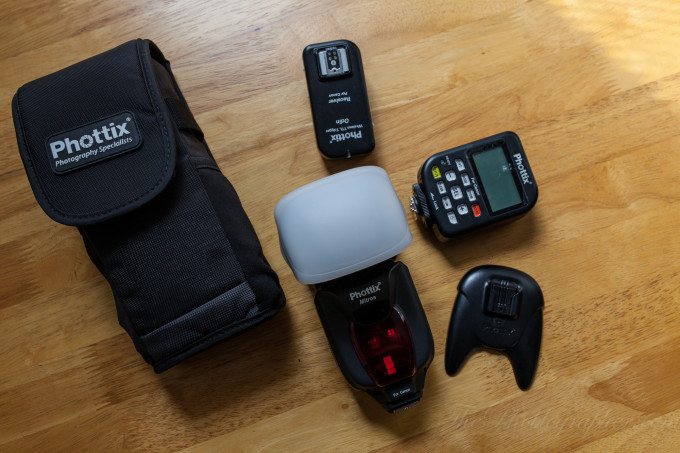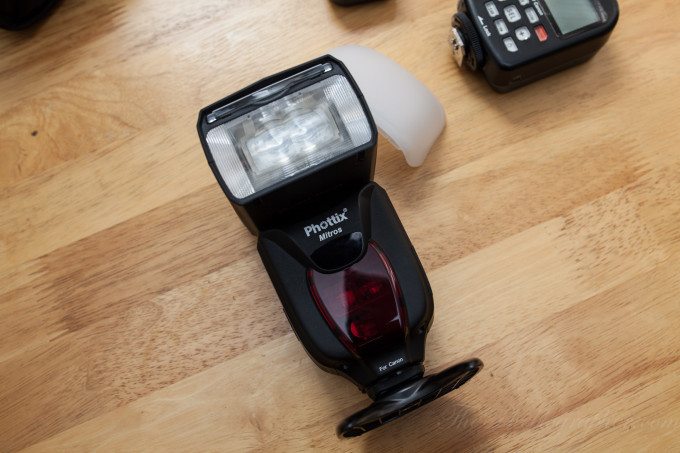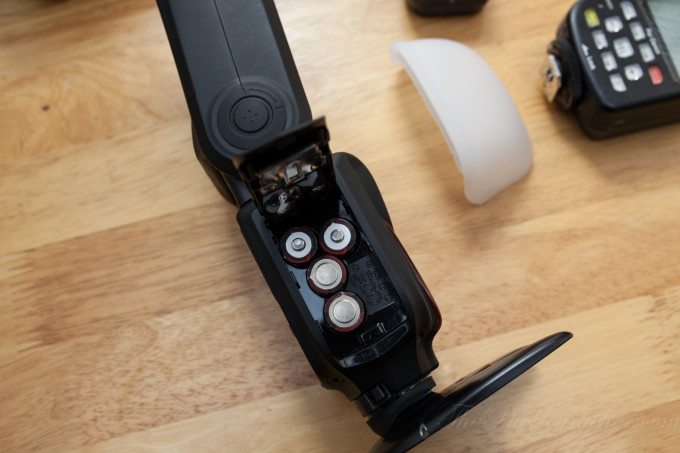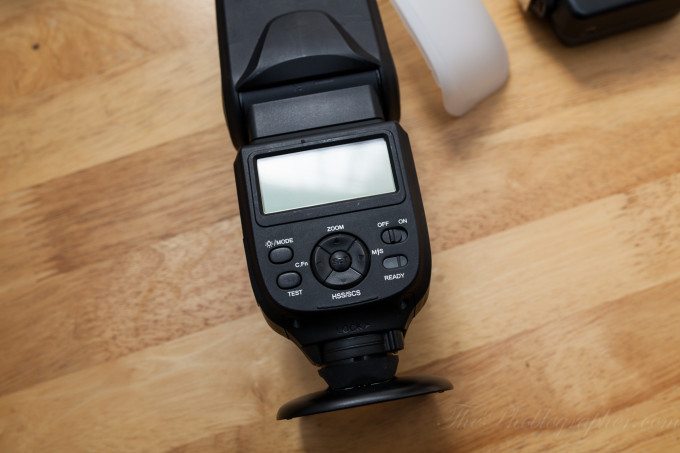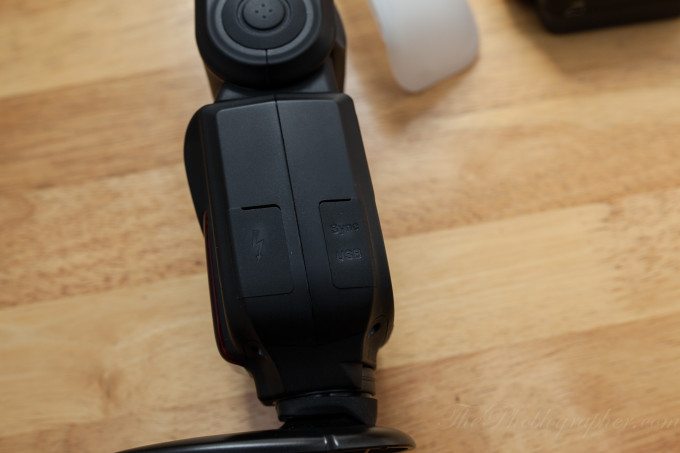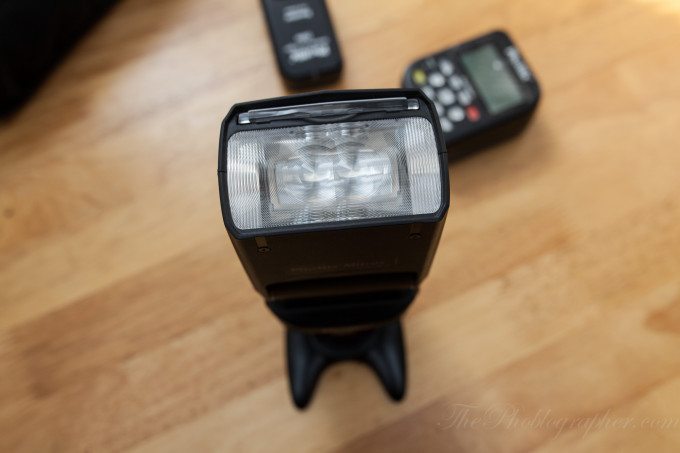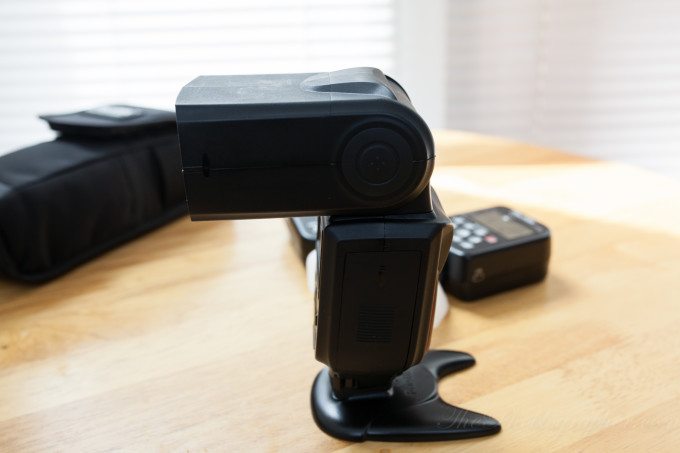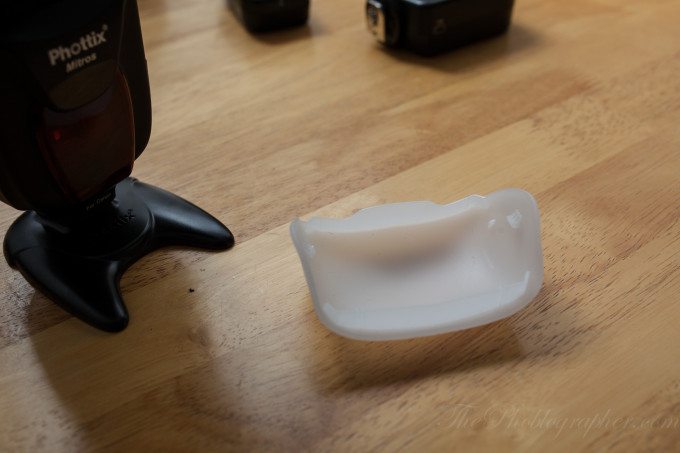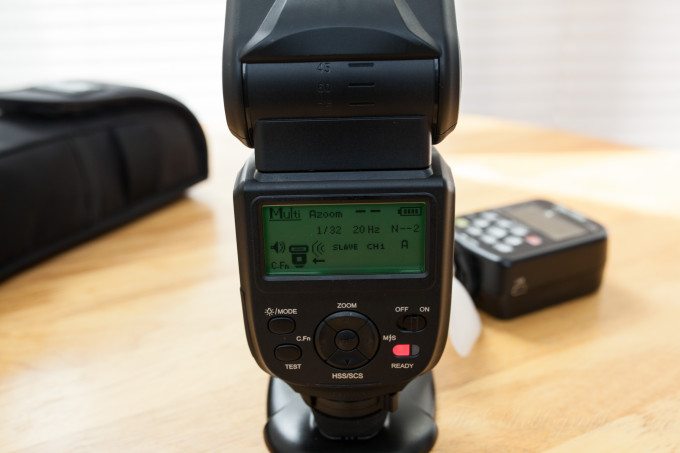Recently, Phottix announced their brand new Mitros flash. Targeted as a competitor to the Canon 600-EX, it cannot take on the company’s RT version of the flash. However, it comes at a more affordable price and it also is just as feature packed and perhaps even better built in some ways.
We were floored by the company’s Odin TTL triggers for speedlites, and were anxious to try this new flash. Believe us when we say that we were sad to see it go.
Pros and Cons
Pros
– Powerful output
– Intuitive interface
– Excellent build quality
– Bundled with a diffuser for a more affordable price point
Cons
– The head doesn’t snap into place and instead can easily be turned or shifted
– This flash should have been designed with the integration of Phottix’s Odin system in mind
– We wish that it recharged faster and didn’t totally nom nom nom batteries.
Gear Used
For this review, we used the Phottix Mitros with the Canon 5D Mk II, Sigma 35mm f1.4 DG, Tamron 90mm f2.8 VC, Tamron 70-200mm f2.8 VC, Phottix Odins, Canon 580 EX II, OCF Gear TTL cord, Yongnuo 560 EX, Canon 430 EX II, Vanguard Auctus Plus 383CT with GH-100 Pistol Grip Headd 383, and the Large ExpoImaging Rogue Flashbender.
Tech Specs
Specs taken from the Adorama listing
| Guide No | 58/190 (at 105mm focal length, ISO 100 in meters/feet) |
| Flash Coverage | 24-105mm (14mm with wide angle diffuser panel) |
| Auto Zoom | Flash coverage automatically adjusts to match the lens focal length |
| Manual Zoom | Zoom can be adjusted by changing setting on the flash/camera |
| Rotation | 360 degrees, Up-Down: -7 to 90 degrees |
| FEC (Flash Exposure Compensation) | Manual |
| FEB (Flash Exposure Bracketing) | +/-3 stops in 1/3 stop increments (Manual flash exposure compensation and FEB can be combined) |
| Sync Modes | First Curtain Sync, Second Curtain Sync, and High Speed Sync |
| Stroboscopic Flash | 1-199Hz |
| Flash Exposure Confirmation | Blue LED lamp lights up in E-TTL mode |
| Flash Recycling | With size-AA alkaline batteries |
| Recycling Time/Flash-Ready Indicator | Normal flash: Approx.0.1-5 sec./Red LED indicator lamp lights up Quick flash: Approx.0.1-2.5 sec./Green LED indicator lamp lights up |
| Internal Power | Four size-AA alkaline batteries or size-AA Ni-MH batteries |
| External Battery | Compatible with Phottix Battery Pack and Canon compact battery pack CP-E4 through specific adapter |
| Power Saving | Non-wireless slave modes: 90 seconds, Wireless slave mode: 60 minutes |
| Transmission Method | Optical pulse |
| Channels | 4 |
| Wireless Options | OFF, Master, Slave and Optical Slave |
| Transmission Range | Approx.: Indoors: 12-16m / 39.36-52.48 ft. Outdoors: 7-9m / 22.96-29.52 ft. Reception angle: +/-40° horizontal, +/-30° vertical |
| Controlled Slave Groups | 3 (A, B, and C) |
| Flash Ratio Control | 1:8-1:1-8:1 |
| Standby Current | 100uA in sleep mode |
| Dimensions (LxWxH) | 8 x 3.1 x 2.3″ (202.8 x 77.5 x 58.3mm) |
| Weight | 15.1 oz (427g) without batteries |
Ergonomics
The Phottix Mitros won’t be a complicated handful for experienced strobists despite its uber serious exterior. On the front of the flash is the Phottix branding and an infrared imaging sensor for slave communication.
To power the flash, you’ll need four AA batteries. They are also placed in an interesting way that I haven’t seen before in other flashes. The latch to lock this all up closes with a nice, soft clap.
When you head to the exterior section of the Mitros, you are at the control deck. Here is where you’ll not only be greeted by an LCD screen display, but you’ll also encounter an interesting layout that isn’t necessarily the most intuitive. The on/off switch, master/slave button, zoom function, high speed sync, custom function, test, and mode buttons are all here.
In the middle of it all is an OK confirmation button.
On the other side of the flash, you’ll find two other port doors. These rubberized seals protect a power pack port, USB port, and sync cable port for PC sync cords.
The flash head itself is quite large–larger than a Canon 580 EX II’s that is. It has a built in wide angle spread panel and a bounce panel built in.
The head had complete 360 directional turn abilities and can only move up or down in a 90 degree path. The head itself doesn’t lock into place the way that one would be used to with Canon flashes. Instead, it has a soft click to let you know that it was moved.
The flash also comes with an interesting and actually useful diffuser. I find these to be much better than the standard diffusers that I have seen otherwise.
Build Quality
The Phottix Mitros feels extremely solid on the outside, as do the rubber flaps protecting the ports on the inside. We didn’t drop the flash, so we couldn’t really test it for that fact. However, it did suffer some scratches due to the finish on the exterior.
Our only complaint is that the head didn’t snap into place and then was also affected when we mounted a Rogue Flash Bender in windy situations or when we simply just switched angles. It became quite annoying at times, but we have a feeling that this flash wasn’t totally designed to be used in the hot shoe. Still, a head that turns is one extra concern during a shoot.
Ease of Use
Though the flash comes with a manual, we didn’t really look at it too much. The interface isn’t the most intuitive, but if you have some experience with flashes it will be a bit easier for you to learn.
When we switched it into stroboscopic mode (multi-flash for you Nikon users) it became even more difficult to work with.
A nice touch though is the fact that you’ll need to press and hold the mode button in order to get out of E-TTL: which can prevent an accidental switch.
In Use

We used the Phottix Mitros for a period of one month for portraiture, nature applications and for lots of the product photography that you see on this site. We used it to also demonstrate how to make flash output look like natural light. Additionally, we gave readers a tip on how to use flash for better macro photos using this product, plus showed off how flash is affected by aperture. During our Tamron 90mm f2.8 VC and 70-200mm f2.8 VC reviews, the flash was also used quite often.
But perhaps our favorite use of the flash came upon photographing a firedancer with it.
For Headshots and Portraits

We used the Phottix Mitros and the Canon 580 EX II together bouncing off of reflectors to light a headshot. To do this, we paired the lights with the Phottix Odins. As I attached the Odin receiver to the Mitros, I really couldn’t help but think that it should have had Odin radio integration built in. That would have been a truly awesome feature.
The Mitros did quite well throughout most of the shoot and worked flawlessly during the headshot session. When we started to move outdoors though, it wasn’t delivering quite enough juice to overpower the sun–but to be fair that had more to do with just how cloudless the day was.
Later on though, we moved inside. That’s when the batteries started to die out. To be fair, High Speed Sync shooting can eat batteries like no one’s business. However, I stopped shooting with that method after a while and it ended up still going through two sets of batteries in a three hour session. For the record, both sets of batteries were also fully charged.
Though we’re positive that many people wouldn’t really use speedlites for headshots, they are highly valued for on-location portrait shooting because of their compact size. The battery life issue might be something to keep in mind for portrait sessions–as it can eat into valuable time that your client is paying for.
Eventually, we actually switched out to my Einstein E640, but that was for the reason that we needed more power. And that’s something else to keep in mind–if you need more power and want to keep the ISOs down, spring for an actual monolight. In reality though, this flash isn’t meant to take on a monolight at all. Many photographers that I know of love to work with just speedlites partially because of their simplicity and TTL communication. And that’s fine, but note the limitations.
Here are some other portraits shot:

For Macro Work
We mounted the flash into the hot shoe of the Canon 5D Mk II and used a Tamron 90mm f2.8 VC with the couple. By putting a Rogue Flash Bender on the flash head and hovering the white side of the modifier over the subject matter, we were able to mimic the look of natural light easily. The flash barely used any power and delivered beautiful light output–further demonstrating just how good its TTL abilities are.
However, shooting on a windy day with a large modifier also teaches you that the head will easily flex out of place–and that can get annoying.
Here are some more macro images:
Mutli-Stroboscopic Flash with a Fire Dancer

One of the things that I’ve wanted to do for a while is photograph a Fire Dancer. As many long time readers of this site will note, I have an affinity of burlesque dancers (my ex-girlfriend got me into them) and other carnival related folk–and some of that is owed to Ben Von Wong. But I also had another vision in mind: I’ve experimented with Stroboscopic flash (known as Multi-flash for Nikon users) which lets lots of movement be photographed in one image. Most people doing this method will only use one flash.
In my studies of light, I’ve been theorizing how to test mutli-stroboscopic flash–which equates to many flashes strobing at once. To do this:
– I used Syl Arena‘s OCF Gear Cord with the Canon 580 EX II set to master
– The Phottix Mitros, 430 EX II and Yongnuo 560 EX were set to slave mode and stroboscopic mode. Each flash was set to the same power output, hertz, and flash number as the 580 EX II.
– The camera was set to first curtain flash although looking back now, I would have set it to second curtain for a better effect.
Why mutli-stroboscopic? The reason is because that way I can be lighting a subject from many different angles. And during this shooting sessions, the Mitros worked flawlessly with no real issues at all. Stroboscopic shooting also drains batteries quite quickly, but we didn’t suffer much of an issue this time around. However, the infrared sensor isn’t as sensitive as I’d like it to be sometimes. But it worked. Here are some more images from that shoot:
Conclusions
We really can’t say much bad about the Phottix Mitros. It served us quite well while we had it and despite it eating battery life in high speed sync mode, it’s a damned good flash. It is affordable and well built, but we wish that the head was a bit stiffer and that the flash had full integration with the company’s excellent Odin system of radio transmitters.
If that happened, Phottix could walk right into Canon’s door with flash guns blazing in glory. But for the low price point that it commands, we’re probably asking for too much.
Please Support The Phoblographer
We love to bring you guys the latest and greatest news and gear related stuff. However, we can’t keep doing that unless we have your continued support. If you would like to purchase any of the items mentioned, please do so by clicking our links first and then purchasing the items as we then get a small portion of the sale to help run the website.


